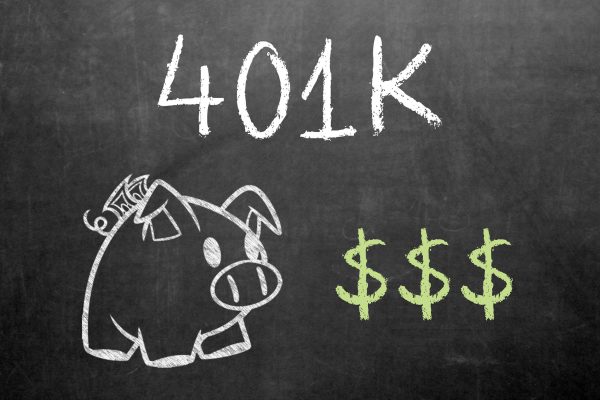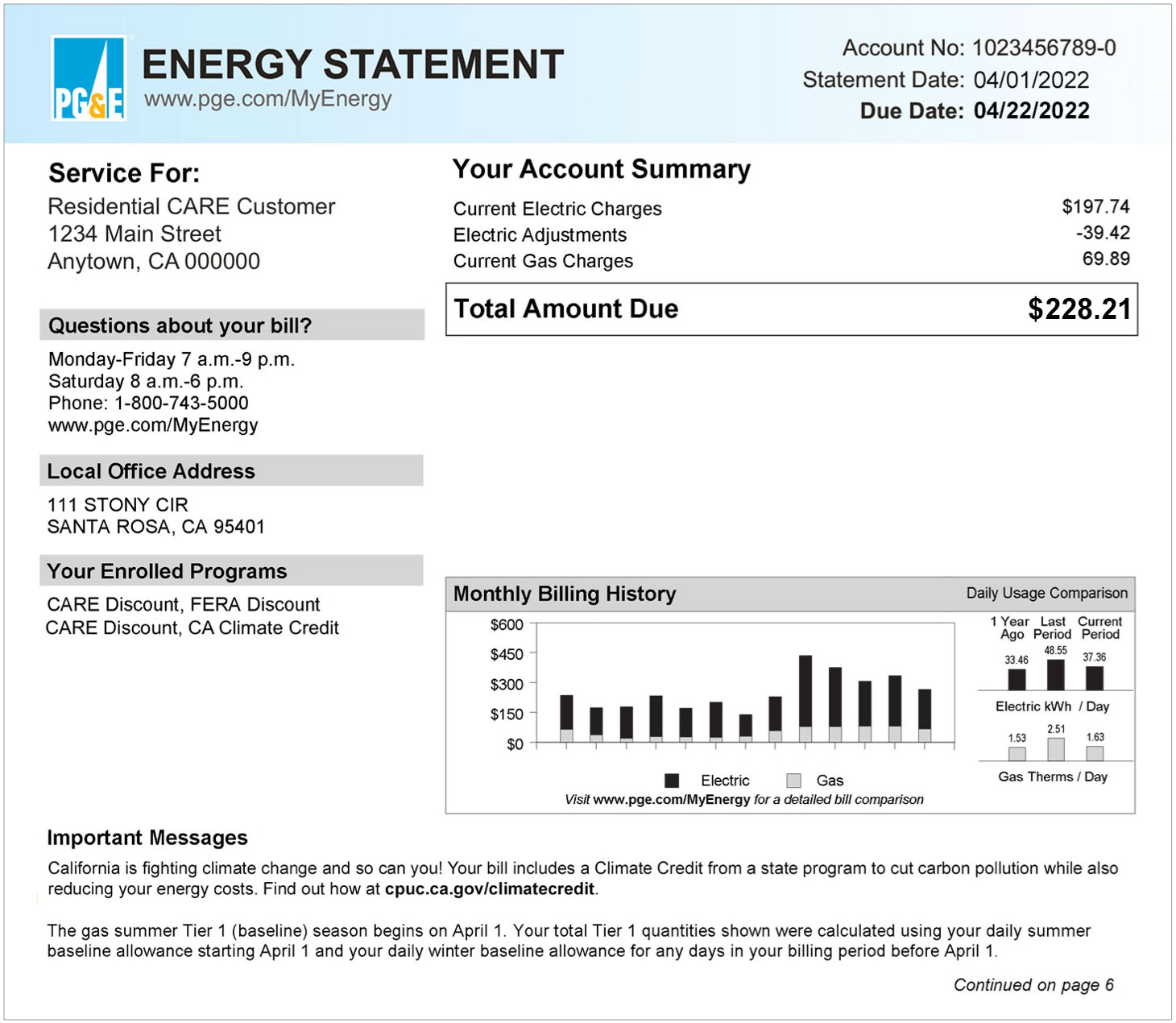

Finance
401(k): Pre-Tax Or After-Tax, Which Is Better?
Published: November 30, 2023
Discover whether a pre-tax or after-tax 401K is better for your finance goals. Make an informed decision with our comprehensive guide.
(Many of the links in this article redirect to a specific reviewed product. Your purchase of these products through affiliate links helps to generate commission for LiveWell, at no extra cost. Learn more)
Table of Contents
- Introduction
- Understanding Pre-Tax Contributions
- Advantages of Pre-Tax 401(k) Contributions
- Disadvantages of Pre-Tax 401(k) Contributions
- Understanding After-Tax Contributions
- Advantages of After-Tax 401(k) Contributions
- Disadvantages of After-Tax 401(k) Contributions
- Comparison of Pre-Tax and After-Tax Contributions
- Factors to Consider When Choosing Between Pre-Tax and After-Tax Contributions
- Conclusion
Introduction
When it comes to saving for retirement, one common option for many employees is a 401(k) plan. This employer-sponsored retirement savings account allows individuals to contribute a portion of their pre-tax income towards their retirement. However, some employees may also have the option to make after-tax contributions to their 401(k) plan. But which is better: pre-tax or after-tax contributions?
Understanding the difference between pre-tax and after-tax contributions is crucial in making an informed decision about how to allocate your retirement savings. Both options have their advantages and disadvantages, and it’s important to consider your individual financial situation and long-term goals.
In this article, we will explore the benefits and drawbacks of both pre-tax and after-tax contributions to help you understand which option may be more suitable for your needs. By gaining a deeper understanding of these contribution types, you can make an educated decision to maximize your retirement savings and tax benefits.
Understanding Pre-Tax Contributions
Pre-tax contributions to a 401(k) plan refer to the portion of your income that is deducted from your paycheck before taxes are applied. This means that the money you contribute to your 401(k) is not subject to federal income tax, state income tax (in most cases), or Social Security and Medicare taxes. You only pay taxes on your pre-tax contributions and any investment gains when you withdraw the funds in retirement.
One of the major advantages of pre-tax contributions is the potential tax savings. By reducing your taxable income, you lower your overall tax liability. This can help increase your take-home pay and allow you to contribute more towards your retirement savings. Additionally, since you are deferring taxes until retirement, your 401(k) contributions grow tax-free, helping to build your retirement nest egg faster.
Another advantage of pre-tax contributions is that they may lower your Adjusted Gross Income (AGI) for tax purposes. This can potentially make you eligible for other tax benefits or deductions that have income-based limitations, such as the ability to contribute to a Roth IRA or qualify for certain tax credits.
However, it is important to note that while pre-tax contributions offer immediate tax savings, you will eventually have to pay taxes on the funds when you withdraw them in retirement. Keep in mind that your tax rate during retirement may be different from your current tax rate. If you expect to be in a higher tax bracket in retirement, you may end up paying more in taxes on your 401(k) withdrawals.
It is also worth considering that pre-tax contributions can affect your eligibility for certain income-based benefits or programs, such as student loan repayment plans or health insurance subsidies. By reducing your reported income, you may inadvertently limit your eligibility for these types of assistance programs.
In summary, pre-tax contributions to a 401(k) offer immediate tax savings, the potential for tax-free growth, and the ability to lower your AGI. However, you will need to pay taxes on your contributions and earnings when you withdraw them in retirement, and it may impact your eligibility for certain income-based benefits.
Advantages of Pre-Tax 401(k) Contributions
Choosing to make pre-tax contributions to your 401(k) plan offers several advantages that can help you maximize your retirement savings. Let’s explore some of the key benefits:
- Immediate Tax Savings: By contributing to your 401(k) on a pre-tax basis, you can lower your taxable income for the year. This means you’ll pay less in taxes, potentially increasing your take-home pay.
- Tax-Deferred Growth: Pre-tax contributions grow tax-free until you withdraw the funds in retirement. This tax-deferred growth allows your investments to compound over time, potentially resulting in a larger retirement nest egg.
- Lower Tax Bracket: If you anticipate being in a lower tax bracket during retirement, contributing pre-tax can be beneficial. You’ll pay taxes on your withdrawals at a potentially lower rate, optimizing your tax efficiency.
- Employer Matching: Many employers offer a matching contribution to employees’ 401(k) plans. By contributing pre-tax, you can maximize your employer match and take advantage of free money towards your retirement savings.
- Reduced Adjusted Gross Income (AGI): Pre-tax contributions can lower your AGI, which is used to determine eligibility for various tax credits and deductions. By reducing your AGI, you may qualify for additional tax benefits.
These advantages make pre-tax contributions an attractive option for individuals looking to minimize their current tax liability and accumulate wealth for retirement. However, it’s important to consider your individual financial situation and long-term goals before deciding to contribute pre-tax.
Disadvantages of Pre-Tax 401(k) Contributions
While pre-tax contributions to a 401(k) offer several advantages, it’s important to consider the potential drawbacks before making a decision. Here are some of the disadvantages to keep in mind:
- Taxation in Retirement: Although pre-tax contributions offer immediate tax savings, you will eventually have to pay taxes on the funds when you withdraw them in retirement. If you anticipate being in a higher tax bracket during retirement, you may end up paying more in taxes on your 401(k) withdrawals.
- Required Minimum Distributions (RMDs): When you reach the age of 72 (or 70 ½ if you were born before July 1, 1949), the IRS requires you to start taking minimum distributions from your pre-tax retirement accounts, including 401(k)s. These distributions are treated as taxable income and can increase your tax liability in retirement.
- Limited Access to Funds: When you contribute to a 401(k) on a pre-tax basis, you generally cannot access the funds penalty-free until you reach age 59 ½. Withdrawing funds before this age may result in early withdrawal penalties and taxes.
- Impact on Other Benefits: Pre-tax contributions can lower your reported income, potentially impacting your eligibility for certain income-based benefits or assistance programs. It’s important to consider how these contributions may affect your eligibility for programs such as student loan repayment plans or health insurance subsidies.
- Loss of Flexibility: Once you contribute pre-tax funds to a 401(k), those funds are generally not accessible until retirement without penalties. This lack of accessibility can limit your flexibility in using the funds for other purposes, such as emergencies or major life events.
Considering these potential disadvantages is crucial in determining whether pre-tax contributions align with your personal financial goals and circumstances. It’s essential to carefully weigh the benefits against the drawbacks and consult a financial advisor if you’re unsure about the best choice for your situation.
Understanding After-Tax Contributions
While pre-tax contributions are the most common type of 401(k) contribution, some retirement plans also allow for after-tax contributions. After-tax contributions refer to funds that are contributed to your 401(k) account with income that has already been taxed. Unlike pre-tax contributions, after-tax contributions are not deductible from your taxable income.
After-tax contributions can be a useful tool for individuals who want to save more towards their retirement beyond the limits of pre-tax contributions or who are looking for additional investment options within their retirement plan.
One key distinction of after-tax contributions is that any investment earnings on these funds grow tax-deferred, similar to pre-tax contributions. This tax-deferred growth can provide potential long-term benefits, as your investment gains are not taxed until you withdraw the funds in retirement.
It is important to note that after-tax contributions are subject to the same annual contribution limits set by the IRS for all 401(k) contributions, including pre-tax and Roth contributions. In 2021, the annual contribution limit for individuals under the age of 50 is $19,500, while those who are 50 and older can contribute an additional catch-up contribution of $6,500. These limits apply to the combined total of pre-tax, Roth, and after-tax contributions.
While after-tax contributions do not offer the immediate tax savings of pre-tax contributions, they can provide some advantages. For example, if your employer allows for in-plan Roth conversions (discussed later), you may have the option to convert your after-tax contributions to Roth contributions, allowing for potential tax-free growth and tax-free withdrawals in retirement.
Additionally, after-tax contributions can offer more flexibility in the withdrawal of funds. When you withdraw after-tax contributions, typically only the investment earnings portion is subject to income tax. The after-tax contributions themselves can be withdrawn without incurring additional tax or penalties.
Understanding the role of after-tax contributions in your retirement plan can help you determine whether it is a suitable option for you based on your financial goals, expected tax situation, and willingness to save beyond the limits of pre-tax contributions.
Advantages of After-Tax 401(k) Contributions
After-tax contributions to a 401(k) plan offer several advantages that can benefit individuals who want to save more for retirement or have additional investment options. Let’s explore some of the key benefits:
- Greater Contribution Limits: After-tax contributions can allow you to save more towards your retirement beyond the limits of pre-tax contributions. While the annual contribution limit for pre-tax and Roth contributions is $19,500 in 2021 (for individuals under 50), after-tax contributions can provide the opportunity to contribute additional funds.
- Tax-Deferred Growth: Similar to pre-tax contributions, after-tax contributions enjoy tax-deferred growth. Your investment gains on after-tax contributions grow tax-free until you withdraw the funds in retirement, potentially resulting in a larger retirement nest egg.
- In-Plan Roth Conversion: Some employers allow for in-plan Roth conversions, which means you can convert your after-tax contributions to Roth contributions within your 401(k) plan. This can provide the potential for tax-free growth and tax-free withdrawals in retirement.
- Flexible Withdrawal Options: After-tax contributions offer more flexibility in the withdrawal of funds. When you make withdrawals, typically only the portion consisting of investment earnings is subject to income tax. The after-tax contributions themselves can be withdrawn without incurring additional tax or penalties.
- Capital Gain Treatment: If you decide to make non-qualified withdrawals from your after-tax contributions, any appreciation or capital gains on those contributions are typically treated as long-term capital gains. This can result in a lower tax rate when compared to ordinary income tax rates.
These advantages make after-tax contributions a compelling option for individuals who want to maximize their retirement savings, have higher contribution limits, benefit from tax-deferred growth, and potentially have tax-free withdrawals in retirement. However, it’s important to consider your individual financial circumstances and consult a financial advisor to determine the best strategy for your retirement savings.
Disadvantages of After-Tax 401(k) Contributions
While after-tax contributions to a 401(k) plan offer several advantages, it’s important to consider the potential drawbacks before deciding to allocate funds towards after-tax contributions. Here are some of the disadvantages to be aware of:
- No Upfront Tax Benefits: Unlike pre-tax contributions, after-tax contributions do not provide immediate tax savings. These contributions are made with income that has already been taxed, so you won’t see a reduction in your current tax liability.
- Limited Employer Match: The employer match is typically based on pre-tax or Roth contributions, not after-tax contributions. This means that while you can contribute more to the retirement account through after-tax contributions, you may not receive as much matching from your employer.
- Lower Liquidity: After-tax contributions are subject to the same withdrawal rules as other 401(k) contributions. Generally, you cannot withdraw funds penalty-free from your 401(k) until you reach age 59 ½. This lack of liquidity can limit your access to the after-tax contributions you’ve made.
- Higher Tax Rates at Withdrawal: When you make withdrawals from your after-tax contributions, only the investment earnings are subject to income tax. However, if you anticipate being in a higher tax bracket in retirement, the tax rate on those investment earnings could be higher, reducing the tax efficiency of your after-tax contributions.
- Lower Conversion Ability: While some employers allow for in-plan Roth conversions of after-tax contributions, not all plans offer this feature. If your plan does not allow for in-plan conversions, you may miss out on the potential tax-free growth and tax-free withdrawals associated with Roth contributions.
Considering these potential disadvantages is essential in evaluating whether after-tax contributions align with your financial goals and circumstances. It’s crucial to assess your tax situation, liquidity needs, and employer match eligibility before deciding to allocate funds towards after-tax contributions.
Comparison of Pre-Tax and After-Tax Contributions
Understanding the key differences between pre-tax and after-tax contributions can help you make an informed decision about which option is best for your retirement savings strategy. Here’s a comparison of the two types of contributions:
1. Tax Treatment: – Pre-tax contributions: Contributions are made with income before taxes are taken out, reducing your taxable income. However, you will pay taxes on the contributions and earnings when you withdraw the funds in retirement. – After-tax contributions: Contributions are made with income that has already been taxed, so there is no immediate tax benefit. However, the investment earnings on after-tax contributions grow tax-free until withdrawal, potentially resulting in tax-free withdrawals in retirement if converted to a Roth account. 2. Current Tax Savings: – Pre-tax contributions: You receive an immediate tax benefit since your taxable income is reduced, potentially lowering your overall tax liability and increasing your take-home pay. – After-tax contributions: There is no immediate tax benefit with after-tax contributions. You will not see a reduction in your current tax liability when making these contributions. 3. Withdrawal Taxes: – Pre-tax contributions: You will pay income taxes on both the contributions and any investment earnings when you make withdrawals in retirement. The tax rate will depend on your income level during retirement. – After-tax contributions: The contributions themselves are not taxed upon withdrawal. However, any investment earnings will be subject to income tax when you take withdrawals. 4. Contributions Limits: – Pre-tax contributions: Your pre-tax contributions are subject to the annual contribution limits set by the IRS, which include pre-tax, Roth, and after-tax contributions. – After-tax contributions: After-tax contributions are subject to the same annual contribution limits as pre-tax and Roth contributions. 5. Conversion Options: – Pre-tax contributions: Pre-tax contributions cannot be converted to a Roth account within the 401(k) plan. However, you may be able to roll over pre-tax contributions to a Roth IRA. – After-tax contributions: Some employers allow for in-plan Roth conversions, which means you can convert your after-tax contributions to Roth contributions within the 401(k) plan, allowing for potential tax-free growth and tax-free withdrawals in retirement. It’s important to carefully consider your individual financial goals, tax situation, and employer’s plan provisions when deciding between pre-tax and after-tax contributions. Consulting with a financial advisor can help you navigate the complexities and make the best choice for your retirement savings strategy.
Factors to Consider When Choosing Between Pre-Tax and After-Tax Contributions
Deciding between pre-tax and after-tax contributions to your 401(k) plan requires careful consideration of several factors. Here are some key factors to weigh when making this decision:
1. Current and Future Tax Situation: Evaluate your current and projected future tax rates. If you are in a high tax bracket now but anticipate being in a lower bracket during retirement, pre-tax contributions may provide greater immediate tax savings. Conversely, if you are in a lower tax bracket now and expect to be in a higher one in retirement, after-tax contributions may be more advantageous. 2. Employer Match: Consider whether your employer offers a matching contribution and how it applies to pre-tax and after-tax contributions. Some employers match pre-tax contributions but not after-tax contributions. If your employer offers a match, take into account the potential value of the match when deciding where to allocate your contributions. 3. Retirement Income Sources: Assess your expected sources of retirement income. If you anticipate significant taxable income from other sources, such as pension payments or rental income, after-tax contributions can provide tax diversification by potentially allowing for tax-free withdrawals in retirement. 4. Long-Term Growth Potential: Evaluate the potential for long-term growth of your contributions. Pre-tax contributions grow tax-deferred, while after-tax contributions and their earnings grow tax-free if converted to a Roth account. Consider the growth potential and the associated tax implications when deciding between the two options. 5. Access to Funds: Consider your liquidity needs and access to funds. Pre-tax contributions generally have restrictions on withdrawals before reaching age 59 ½, while after-tax contributions may offer more flexibility. If you anticipate needing funds before retirement, after-tax contributions may be a better fit. 6. Conversion Options: Look into whether your employer allows for in-plan Roth conversions of after-tax contributions. If the option exists, you have the potential to convert your after-tax contributions to a Roth account within the same plan, allowing for tax-free growth and tax-free withdrawals in retirement. 7. Financial Goals and Risk Tolerance: Consider your overall financial goals, risk tolerance, and investment strategy. Assess how pre-tax or after-tax contributions align with your broader financial plan and investment objectives. Remember, there is no one-size-fits-all answer when choosing between pre-tax and after-tax contributions. It’s essential to evaluate these factors in the context of your unique financial situation. Consulting with a financial advisor can provide valuable guidance and help you make the best decision for your retirement savings strategy.
Conclusion
Choosing between pre-tax and after-tax contributions to your 401(k) plan is an important decision that can impact your retirement savings and tax situation. Each option offers distinct advantages and disadvantages, and understanding your financial goals and circumstances is crucial in making the right choice.
Pre-tax contributions provide immediate tax savings, the potential for tax-free growth, and can lower your current tax liability. However, you will have to pay taxes on both the contributions and investment earnings when you withdraw the funds in retirement.
After-tax contributions do not offer upfront tax benefits, but they provide the opportunity for tax-free growth and potential tax-free withdrawals in retirement if converted to a Roth account. They also allow for greater contribution limits and offer more flexibility in accessing funds compared to pre-tax contributions.
When deciding between pre-tax and after-tax contributions, consider factors such as your current and future tax situation, employer match availability, retirement income sources, long-term growth potential, access to funds, conversion options, and overall financial goals. Ultimately, the choice depends on your individual circumstances, risk tolerance, and long-term objectives. It may be beneficial to consult with a financial advisor who can assist in evaluating your options and guiding you towards the most suitable contribution strategy. Remember, whatever option you choose, the key is to start saving early and consistently contribute to your retirement account. By doing so, you are taking important steps towards building a solid financial foundation and securing a comfortable retirement lifestyle.














